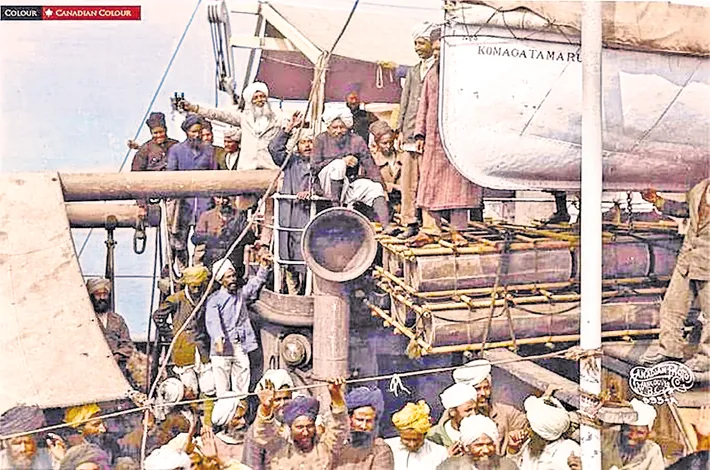A stain: The Komagata Maru incident of 1914
25-05-2025 12:00:00 AM

Agencies Vancouver
The Komagata Maru incident of 1914 stands as a poignant symbol of racial discrimination in Canada's immigration history. At its heart was Gurdit Singh Sirhali, a wealthy Sikh businessman, who chartered the Japanese steamship Komagata Maru to transport 376 prospective South Asian immigrants, predominantly Sikhs, but also Muslims and Hindus, to Canada. His aim was to challenge Canada's restrictive "Continuous Journey Regulation" and the requirement for a $200 arrival fee, which effectively barred Indian immigration.
After a months-long search, Gurdit Singh secured the Komagata Maru, a non-British vessel, which departed Hong Kong in April 1914. The passengers, mostly Punjabi men from elite landowning families, many with military or police backgrounds, sought economic advancement abroad. They were deeply committed to their journey, forming a cohesive community through daily worship and political discussions onboard.
Upon arrival in Vancouver on May 23, 1914, Canadian authorities, despite the passengers being British subjects, denied entry to all but a handful. This ignited a two-month standoff, with passengers confined to the ship, enduring severe hardship as their attempts to gain entry were blocked by officials. Despite legal challenges mounted by their supporters in Canada, the British Columbia Court of Appeal upheld the government's stance, finding no right of entry for the passengers.
On July 23, 1914, the Komagata Maru, carrying 355 disheartened passengers, was forced to return to Asia. The ordeal tragically continued upon their arrival in Budge Budge, India, on September 29, 1914. British Indian authorities, suspicious of the "revolutionaries," confronted the passengers, leading to a violent clash that resulted in 19 deaths and numerous imprisonments.








